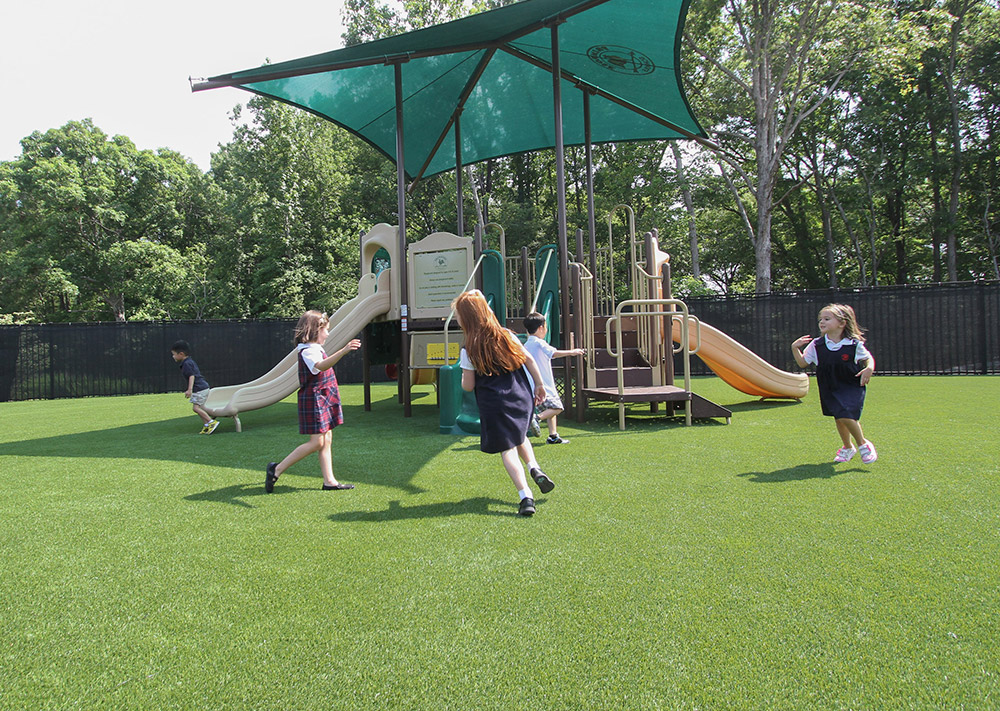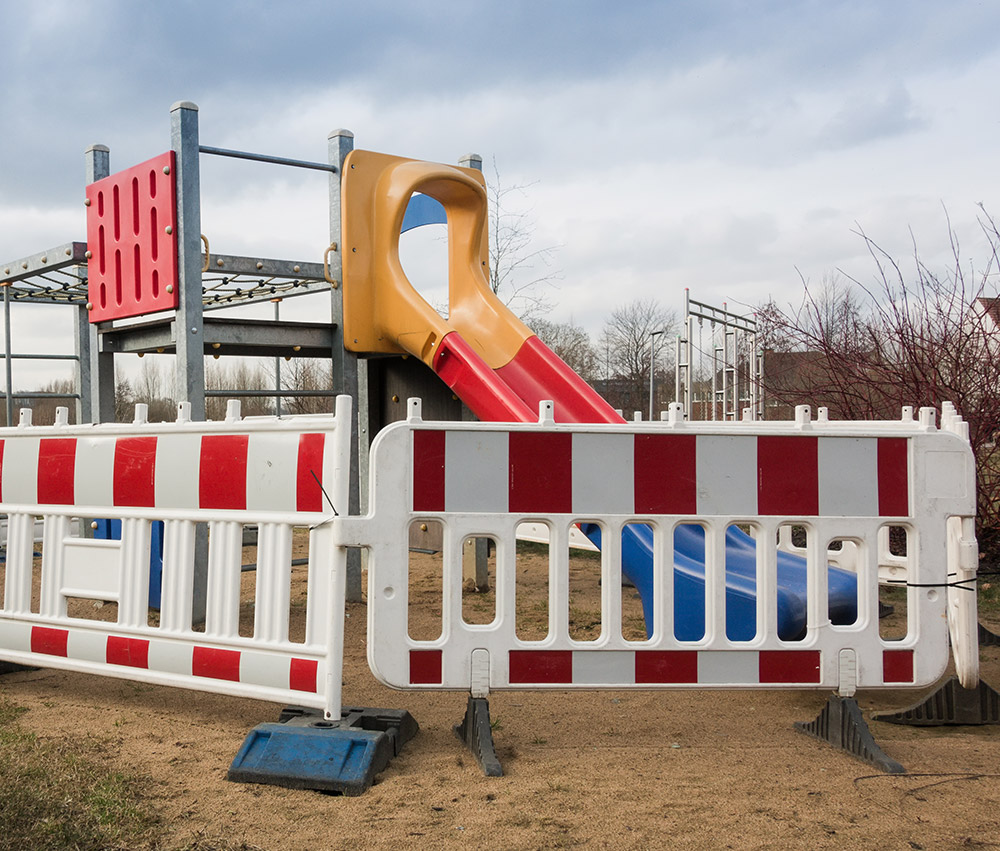Safety
While it's impossible to prevent all injuries on a playground, the surfacing one chooses can help not only reduce the severity of injuries from falls (particularly head injuries), but also prevent minor injuries from tripping and such. The best surfaces, therefore, maintain consistent protection against falls as well as resisting environmental factors and hiding foreign objects.
Safety
Winners
Unitary surfaces like synthetic turf and poured-in-place rubber tend to be the safest surfaces due to their consistent, even and cushioning qualities. Since they cannot be displaced, they don't require constant raking and there is little chance of children choking on the material. These surfaces are also less susceptible to environmental factors, such as cold or humid weather, which can reduce the impact attenuation abilities of loose-fill materials.

Safety
Losers
As a general rule, loose-fill surfaces are not as safe as unitary surfaces because they get displaced so easily and compact over time. So, while their impact attenuation properties may be great initially, the reality is that loose fill materials tend to get displaced from high traffic areas under monkey bars, slides, swings and other equipment where they are needed most.
- Uneven surfaces can cause trips or falls
- Materials get spread onto walkways causing slipping hazards
- Small children eat, throw or use materials in unsafe manner
- Can hide dangerous items like broken glass or sharp objects


